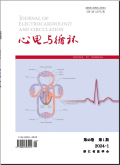Slow/fast atrioventricular nodal reentrant tachycardia using the in-ferolateral left atrial slow pathway-role of the resetting response to select the ablation target
In the majority of cases of slow/fast Atrioventricular nodal reentrant tachycardia(AVNRT), which occurs in≈90% of the patients, the anterograde slow pathway is formed by the rightward inferior extension of the atrioventricular node, which can be targeted for ablation with a low risk of atrioventricular block at the inferior triangle of Koch. In a smaller number of patients, the anterograde limb of the slow/fast AVNRT circuit is formed by the leftward inferior extension of the atrioventricular node, which can be targeted at the roof of the coronary sinus, ≈1 to 3cm from the coronary sinus ostium or from the inferior paraseptal mitral annulus. On rare occasions, the slow pathway participating in AVNRT may connect to the basal inferolateral left atrium (IL-LA), near the mitral annulus. we refer to it as IL-LA slow pathway. Because most of these patients do not exhibit retrograde conduction over the IL-LA slow pathway, and anterograde slow pathway conduction cannot be recorded for localization, a different approach must be used to identify a safe and successful site for ablation. The aim of this study was to describe a technique to identify the ablation target by using the resetting response1 elicited by delivering late atrial extrastimuli along the basal IL-LA, near the mitral annulus, to localize the atrial end of the anterograde slow pathway participating in the tachycardia.
37
2018-12-25(万方平台首次上网日期,不代表论文的发表时间)
共5页
442-446






